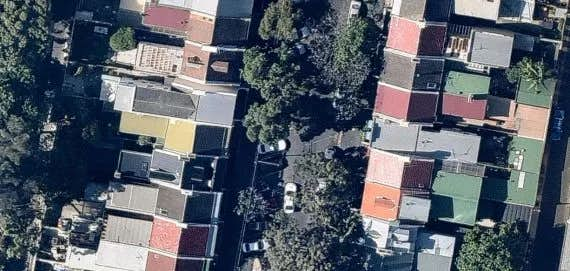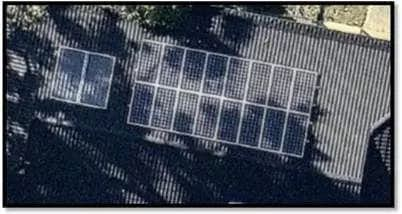Solar
Solar
Battery Storage
Battery Storage
Battery Storage
EV Charger
EV Charger
EV Charger
Heartbeat
Smart Energy Manager
Heartbeat
About Us
About Us
Learn
Featured Articles
Sizing Up A System
Finance & Rebates
Learn
Now servicing New South Wales, Victoria, Queensland and South Australia
Request Pricing
There are a number of reasons why some people shouldn’t get solar panels and we’ve listed the top 10 reasons here.
There are a lot of cowboys in the solar industry and many salespeople may try to convince you to buy solar when it isn’t in your best interest. We suggest you don’t buy solar when these apply to you, or at least give us a call us before you get talked into buying a solar system that will end up being a waste of money.
When the factors below apply to you and you’re asking “ Is solar a good idea? “, we suggest you read more on our website to get all the information you need to make an informed decision.
Typically, the smallest system we sell is a 2kW system with 8 panels. The roof space required for a 2kW system is 8m x 1.7m, or 4m x 3.4m (each panel is approximately 1.7m tall by 1m wide). A number of properties such as terrace houses in the inner west do not have a large enough roof space for even the smallest system, in which case solar power cannot be installed on your roof. More information: Solar Power for a terrace house.

Solar power only works during the daytime and needs to be used in the home as it is generated. Because solar power is fed into the home to directly reduce your power bill, to benefit from solar power you need to be able to use most of the solar power as it is generated during the day, most of the time.
If no one is home during the day, there are still ways to benefit from a small solar power system without too much trouble. A 3kW system will output approximately 1kW-2kWs of power much of the time and on average around 12kWh a day, meaning you don’t need to have a high power usage to use a good percentage of the solar power. The baseload of your house will typically include a fridge, freezer, a few lights and appliances that are left on. Often this, along with pool pumps and other appliances that can be controlled with a timer will add up to around 6-10kW/h during the daytime.
Don’t forget that approximately 3 out of 10 days are either a weekend or a holiday, and that in summer a system facing between west and north will produce a good amount of power right up until sunset, which gives you many hours of solar generation between the kids coming home from school and the solar system turning off.
As mentioned, the other main point to remember is that it is often quite easy these days to put appliances and pool pumps to run on timers. The 5 main examples are pool pumps, air conditioning/ heating, the washing machine, the dryer and the dishwasher. If you are able to run any or all of these on timer during the day when the sun is shining, it is not only possible to maximise the benefit of a smaller system, but you may be able to justify a much larger system, especially at the moment with low solar panel prices and significant government rebates.
With battery storage now available, it is also possible to store any excess solar power to be used in the evening. For more information about hybrid solar and solar storage please submit an enquiry and we can talk through your options.
The primary benefit of solar power is to reduce the daytime component of your power bill. If your power bills are under $250 a quarter and you use most of your power at night, solar power can at best save you around $100 per quarter. If you buy a 2kW system for around $3,500, the best case return on your money is around 8 to 9 years, and you would have to decide if this makes sense for your situation.
In most cases, we aim for a return on your money in 3 to 5 years, and generally, you would need to have a power bill of at least $250 a quarter with the ability to use around 8 kWh of solar power during the day. Check your bill to see how much power you use as a daily average. If it is less than 10 kWh a day it may be hard to justify the financial benefits of solar power.
However, the installation of solar power, whether or not it is used or exported, always contributes to the reduction of carbon emissions and greenhouse gases.
Please contact us for more information about this, and have a power bill handy so we can give you personalised advice.
A solar power system should usually pay for itself within around 3 to 5 years. If you are planning on moving house within the next year or so, it usually doesn’t make financial sense to install solar power.
As a general rule, we recommend you plan on being in the home for at least 3 years to make sure you get a good return on your money, rather than generously reducing the power bills of the new occupants.
Having partial shade on your roof is no longer the major issue it was a few years ago. By using Enphase Micro-Inverters, solar output in shady locations can still deliver great value for money.
However, on roofs that have serious shade issues, it is important to understand that micro-inverters don’t increase output from a panel in shaded environments, rather they make each panel independent from the rest of the array so that if one panel is shaded it is only that one panel that is affected.

This means that if your roof is completely shaded for most of the day, for example from a neighbouring building, then solar power may not be suitable for your house or business. Yes, premium panels will work better than others in low light conditions, however, there are no panels on the market that work well in heavily shaded conditions, because panels work off light rather than heat, and it is only when they have direct sunlight that they start performing well.
It is worth remembering that for many houses, shade is only an issue in the winter months, and as a solar system produces much of its annual output in the ‘summer half of the year’, it is normally worth checking with us to see to what extent shade will impact your system’s performance, a lot of the time it is not as bad as you may think.
We get a number of enquiries from households planning a roof restoration in the near future. Our install department has extensive experience managing this process, and we can ensure that the solar system is installed shortly after the roof restoration is completed. If your roof is due for an upgrade or restoration, it is important not to install the solar panels first, as it can cost up to around $1,000 for a team of qualified solar installers to take off the panels and reinstall them.
Just as with roof restorations, if you are planning to renovate within the next year or so, and the renovation will involve removing the existing roof then it would normally be best to hold off on the solar installation until after the new roof is completed. Often, it is possible to include in the budget the removal and replacement of an existing solar array into the renovation. At around $1,000 it often won’t break the budget, however, it certainly doesn’t make sense to install a solar system right before a planned renovation. Keep in mind that you will need to have a safe place to store the panels during the renovation.
Households that have an owners corporation such as unit blocks and even townhouses are often not permitted to use a common roof area for a solar power system. Before getting a quote for solar power, it is important to contact your strata management to see if you are allowed to install solar power – even if it is not a shared roof that you are planning to use for the installation.

We also find some new developments have rules restricting the installation of panels on the street-facing roof. This might be a complete show stopper, or it may mean our install planners will need to design an array that uses a roof section along the side of your house, typically facing west. More information about this is available here: Do I need permission to install solar power?
Many houses in the inner west, inner-city and north shore have heritage restrictions that ban the installation of solar panels on the street-facing roof. It is important to check with your local council if you think this may apply to your area.
Conversely, many councils are now quite pro-active in the uptake of renewable energy, and on public buildings or buildings with high public exposure, it is possible to get an exemption to allow the installation of solar panels. If you live in a heritage area, it is best to speak with your local council as a first step, and we are always happy to help with advice when we can.
For residential solar systems, generally, it is not a good idea to change your off-peak hot water across to the main phase of your house to then run off solar power. Because the tariff on your off-peak is so low, it will take much longer than the average 3-5 years for the system to pay for itself. This can also apply to off-peak electricity on time of use billing, which is only applicable if you have a digital meter.
For commercial solar systems, this is often applicable to businesses that have a low cost per kWh that were considering solar power as a way of reducing short to mid-term energy costs. As a general rule, the less you pay for your power, the longer it will take for the solar system to pay itself off. Our solar team can get the numbers to work for your business in almost all cases, however, there are times when the cost of electricity is so low that solar power is not a recommended investment. Please contact our commercial solar team for more information.
Our solar experts will help you find the right system for your home.

Get all the right information before installing a solar power system for your home.
